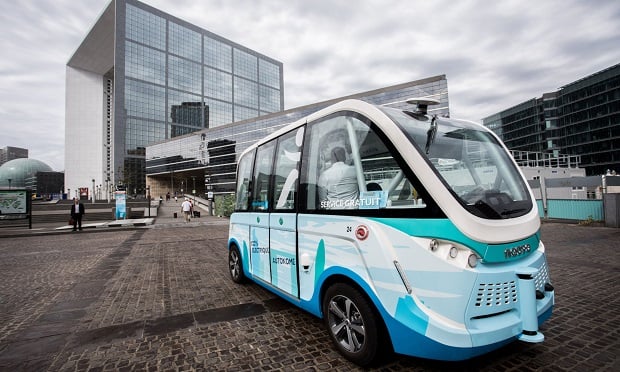 The Navya Technologies SAS Arma autonomous shuttle bus travels in La defense District, Paris, France, on Wednesday, July 19, 2017. (Photo: Christophe Morin / Bloomberg)
The Navya Technologies SAS Arma autonomous shuttle bus travels in La defense District, Paris, France, on Wednesday, July 19, 2017. (Photo: Christophe Morin / Bloomberg)
The National Transportation Safety Board (NTSB) recently released its findings from an investigation of a minor collision between an autonomous shuttle and a commercial truck in Las Vegas in 2017.
There were no injuries to the seven passengers and one attendant aboard the shuttle or to the driver of the truck; however, the accident caused minor damage to the lower left front of the shuttle's body and a minor abrasion to the truck's tire.
Recommended For You
Want to continue reading?
Become a Free PropertyCasualty360 Digital Reader
Your access to unlimited PropertyCasualty360 content isn’t changing.
Once you are an ALM digital member, you’ll receive:
- Breaking insurance news and analysis, on-site and via our newsletters and custom alerts
- Weekly Insurance Speak podcast featuring exclusive interviews with industry leaders
- Educational webcasts, white papers, and ebooks from industry thought leaders
- Critical converage of the employee benefits and financial advisory markets on our other ALM sites, BenefitsPRO and ThinkAdvisor
Already have an account? Sign In Now
© 2025 ALM Global, LLC, All Rights Reserved. Request academic re-use from www.copyright.com. All other uses, submit a request to [email protected]. For more information visit Asset & Logo Licensing.








